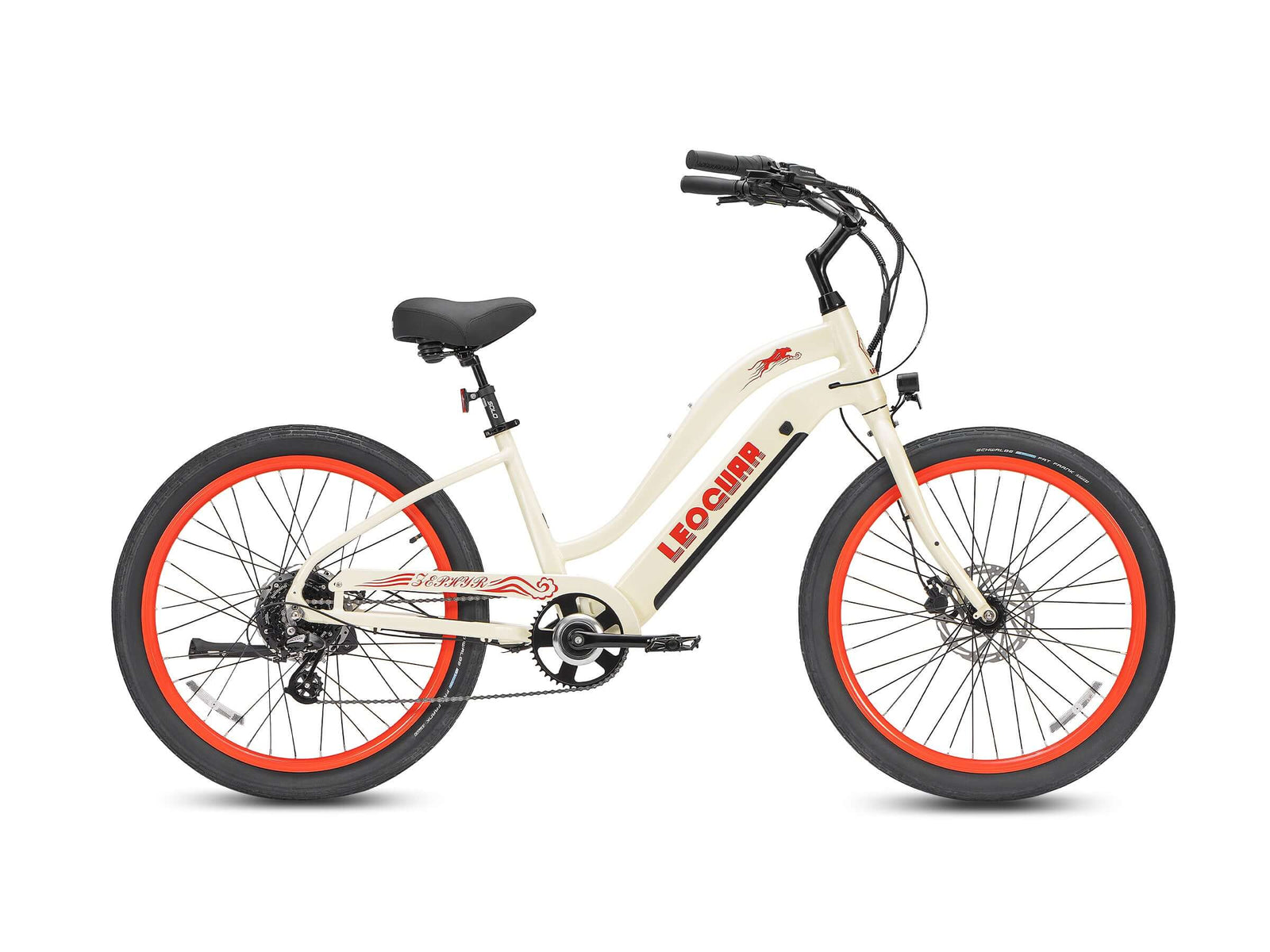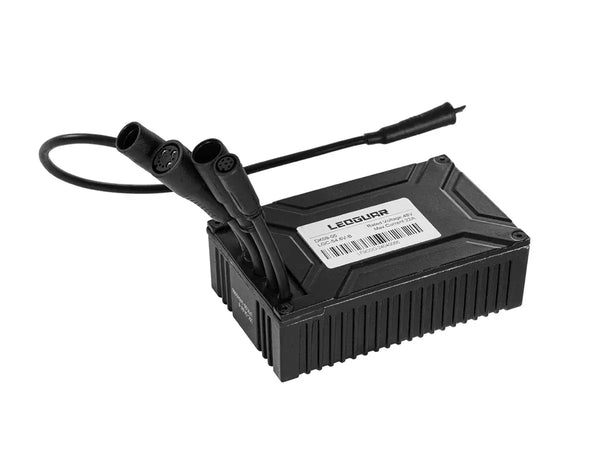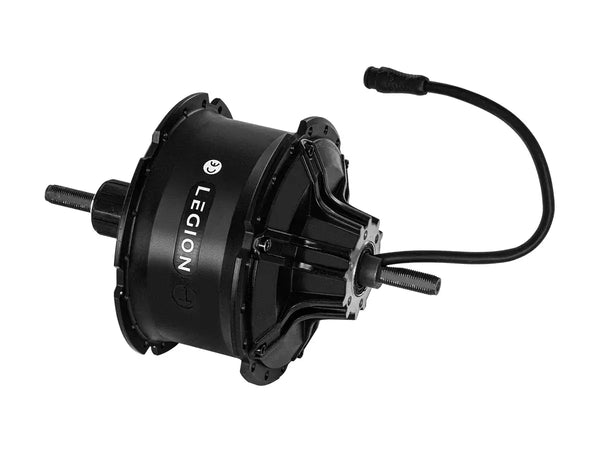
E-Bike Watts vs Nm: Understanding Torque and Power in Electric Motors
The Great Debate
When you compare e-bikes, the spec sheet can feel like a technical battlefield. On one side, you have Watts (W). On the other side, you have Newton-meters (Nm). It's easy to get lost wondering which number shows a motor's true strength. We're here to tell you it's not a battle. The discussion of torque as it relates to an electric motor vs watts isn't about a winner and a loser. It's about understanding a crucial partnership.
Think of it this way: torque is the raw strength to lift a heavy box off the floor. Watts are the power needed to carry that box quickly across the room. One is about initial force. The other is about sustained work over time. They are different but work together to get the job done. This guide will explain these terms, show their connection, and help you choose the perfect balance for your ride.
Defining Power and Torque
To make a smart decision, we first need to establish a clear foundation. Let's break down what Watts and Newton-meters actually mean in the context of an e-bike. We'll use simple terms and examples to strip away the technical jargon.
What is Power (Watts)?
Power, measured in Watts (W), represents the rate at which the motor can do work. It's the sustained energy output over time. Think of it as the motor's endurance and its ability to maintain speed. A higher wattage number doesn't always mean a "stronger" feeling bike, but it does indicate a higher capacity for continuous power delivery. Higher wattage generally means:
- Higher potential top speed while the motor is assisting.
- Better ability to hold speed against resistance, like headwinds or on long, gradual inclines.
- It is often tied to legal classifications. For instance, many e-bikes in the UK and EU are limited to a nominal 250W, whereas Class 1, 2, and 3 e-bikes in the US are often rated at 750W.
What is Torque (Nm)?
Torque, measured in Newton-meters (Nm), is the rotational or "twisting" force of the motor. This is the immediate "grunt" you feel when you first push the pedals or twist the throttle. It's the force that gets you moving from a complete stop and pushes you up steep hills. Torque is what you feel as instant power. Higher torque delivers:
- Quicker acceleration from a standstill.
- Greater ability to conquer steep hills without slowing down.
- More effective performance when carrying heavy loads, whether it's cargo or a heavier rider.
| Feature | Power (Watts) | Torque (Nm) |
|---|---|---|
| Primary Role | Sustained Speed & Endurance | Initial Acceleration & Climbing Force |
| You Feel It Most | On flat ground, maintaining high speed | From a stoplight, starting on a hill |
| Analogy | A marathon runner's steady pace | A weightlifter's initial lift |
| Key Benefit | Holding speed against wind | Getting heavy loads moving |
The Crucial Connection
Watts and torque are not isolated figures on a spec sheet. They are closely linked. Understanding their relationship is the key to figuring out how an e-bike will actually perform on the road or trail.
The Physics Explained Simply
The relationship between these two metrics is defined by a standard engineering formula: Power (Watts) = Torque (Nm) × Rotational Speed (RPM). In plain English, this means a motor's total power output (Watts) is a product of its twisting force (Torque) and how fast it's spinning (RPM). This is why the debate over torque as it relates to an electric motor vs watts is misleading.
A motor can achieve a high watt output in two ways: by producing a lot of torque at a low speed, or by producing less torque at a very high speed. This relationship, as confirmed by a standard engineering formula, dictates the entire character of the motor.
Why High Torque Feels Punchy
This formula explains a common scenario that confuses many buyers. A legally-rated 250W motor with 85 Nm of torque can feel much more powerful on a steep climb than a 750W motor that only produces 50 Nm of torque.
Why? Because on that steep, low-speed climb, your motor's RPM is low. In this situation, high torque is essential to keep the bike moving forward. The high-torque motor is operating in its sweet spot, delivering massive rotational force.
The low-torque motor, despite its high wattage potential, struggles to generate the necessary twisting force at that low RPM and feels weak. Torque is what gives you the sensation of power, especially from a standstill and at low speeds.
Beyond the Spec Sheet
Focusing solely on a single watt number is one of the biggest mistakes a new buyer can make. That number is often just one part of a much larger and more complex electrical system. To truly understand performance, we have to look behind the marketing.
Nominal vs. Peak Watts
One of the most common points of confusion is the difference between nominal and peak wattage.
Nominal Watts: This is the continuous power output the motor can sustain over a long period without overheating. This is typically the number regulated by law (e.g., 250W in the EU, 750W in the US). Think of this as the motor's all-day cruising power.
Peak Watts: This is the maximum power the motor can deliver for short bursts, such as during hard acceleration or for a few seconds on a steep hill. This number can be significantly higher than the nominal rating. Some brands advertise the peak wattage because it's a bigger number, but the nominal wattage is a much more realistic indicator of the bike's everyday, sustainable performance.
The Unsung Heroes
Two other components play a massive role in how power is delivered: the controller and the battery voltage.
The Controller: This is the ebike brain. It's a small computer that tells the motor how much power to draw from the battery based on your input. A sophisticated controller can deliver power and torque more smoothly and efficiently, making a 250W motor feel more responsive and powerful than a poorly managed 750W system.
Battery Voltage (V): Think of voltage as the "pressure" in the system. A higher voltage system (e.g., 48V or 52V vs. 36V) can deliver the same wattage with less current (Amps). This often results in a more efficient system that runs cooler and delivers power more effortlessly.
As experts note, there is no standardized way to rate ebike motor power, which makes looking at the entire system—including voltage—even more critical.
Matching Specs to Your Ride
Theory is great, but how does this help you choose a bike? Let's translate this knowledge into practical advice for different types of riders.
The Urban Commuter
Your Needs: You need quick acceleration to get ahead of traffic at stoplights, enough power to handle city inclines and overpasses, and good overall efficiency for range.
Our Recommendation: Focus on responsive torque in the 50-65 Nm range. This provides the "snap" you need from a standstill. A standard nominal motor of 250W to 500W is more than sufficient for city riding and helps preserve battery life.
The Mountain Trail Conqueror
Your Needs: You require sustained, powerful torque to climb steep, loose, and technical terrain where maintaining momentum and traction is critical.
Our Recommendation: Prioritize high torque. Look for motors delivering 85 Nm or more. The wattage is secondary to how effectively that torque is applied. Mid-drive motors excel here. We've tested bikes on steep, loose gravel trails. A high-torque (90Nm) mid-drive motor allows you to maintain cadence and traction, feeling planted and in control. In contrast, a high-wattage hub motor with lower torque can sometimes spin out in these situations.
The Cargo and Family Hauler
Your Needs: Your biggest challenge is overcoming inertia. You need immense starting torque to get a heavy load—be it groceries, packages, or children—moving from a dead stop, especially on an incline.
Our Recommendation: Maximum torque is your primary concern. Look for systems with 80 Nm or more. A higher power rating (500W+) will also help you maintain speed once you're moving, but the initial grunt from high torque is non-negotiable.
The Leisurely Cruiser
Your Needs: You want smooth, gentle assistance that complements your pedaling, not overpowers it. The ride feel should be natural and relaxed, perfect for bike paths and gentle hills.
Our Recommendation: Raw power is not the goal. A motor with lower torque (40-50 Nm) will provide a much smoother, less "jerky" experience. It feels more like a traditional bike with a constant tailwind, which is ideal for relaxed cruising.

The Final Verdict
So, after exploring the nuances of torque as it relates to an electric motor vs watts, what's the verdict? The answer is clear: stop looking for a single winner. Instead, evaluate the partnership between them. Here's the simple takeaway:
- Torque (Nm) is for Go. It gets you accelerating and powers you up hills.
- Power (Watts) is for Show. It helps you sustain higher speeds on flatter ground.
Don't be swayed by a single, large number on a spec sheet. A high watt rating with low torque may feel sluggish, while a lower watt motor with high torque can feel incredibly powerful. The best approach is to consider the entire system—electric bike motor torque, nominal wattage, controller, and battery voltage—and, most importantly, match it to your specific riding needs.
Ultimately, the spec sheet can only tell you so much. The best way to understand the difference is to feel it for yourself. We always recommend test riding different types of motors to see which "partnership" of torque and watts feels right for you.
Frequently Asked Questions
1. Q: Is torque more important than watts for e-bike performance?
A: Neither is more important than the other. Torque gives you instant power and helps with acceleration and climbing hills. Watts help you maintain speed over time. Both work together to determine how your e-bike performs.
2. Q: What's the difference between nominal and peak watts?
A: Nominal watts is the continuous power your motor can sustain all day without overheating. Peak watts is the maximum power it can deliver for short bursts. Nominal watts is more important for everyday riding.
3. Q: How much torque do I need for hill climbing?
A: For steep hills, look for motors with 65 Nm or more of torque. Mountain riders and cargo haulers should consider 80-90 Nm for the best performance on challenging terrain.
4. Q: Can a 250W motor be more powerful than a 750W motor?
A: Yes, if the 250W motor has higher torque. A 250W motor with 85 Nm of torque can feel more powerful on hills than a 750W motor with only 50 Nm of torque, especially at low speeds.
5. Q: Should I focus on motor specs or test ride the bike?
A: Both are important. Understanding specs helps you narrow down your choices, but test riding is the best way to feel how torque and watts work together for your specific riding style and needs.










































Leave a comment